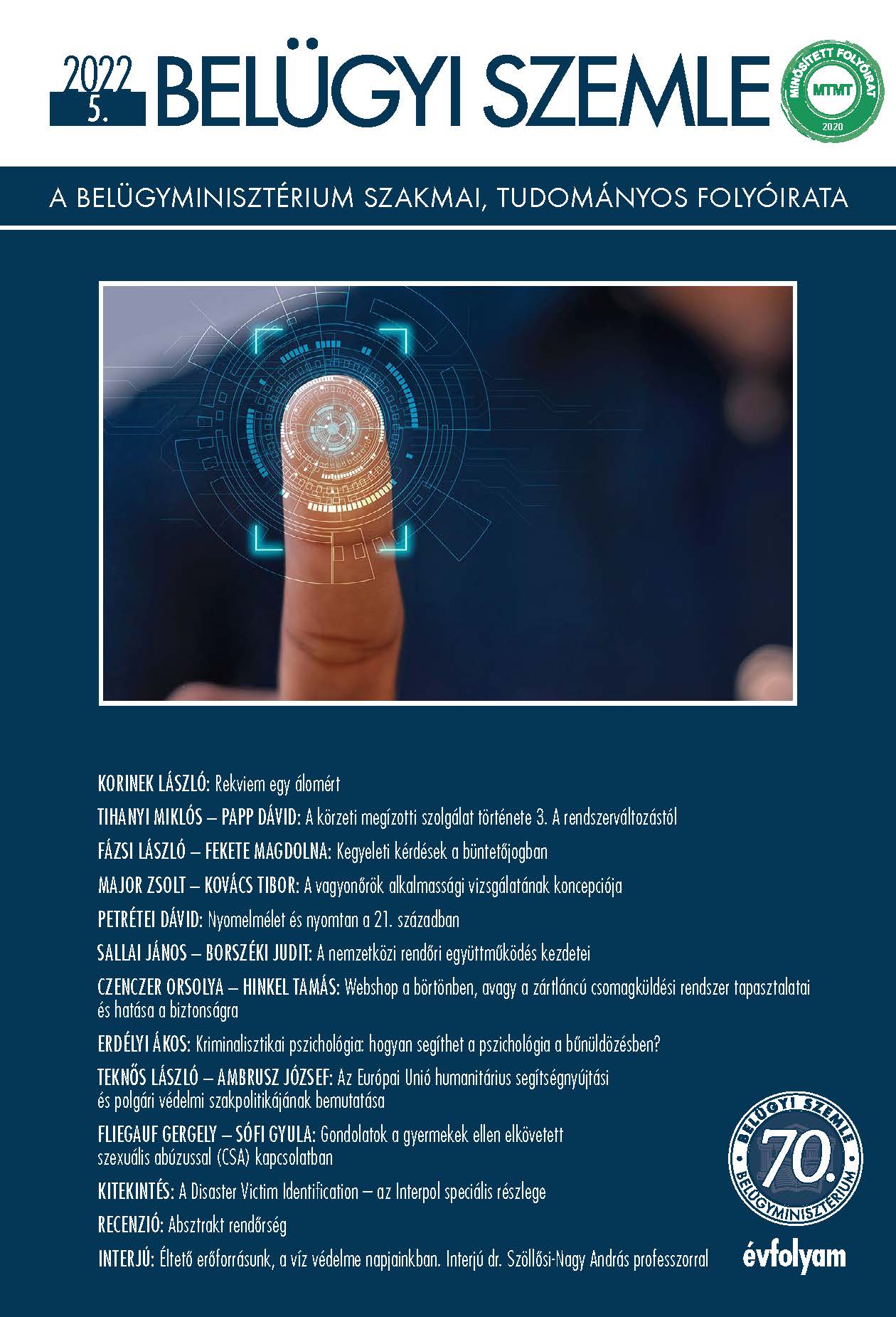Abstract
Aim: The „theory of pattern evidence” is one of the comprehensive theories of forensic science, working with pattern evidence requires theoretical and practical knowledge, as a subfield of forensic technology. The relationship between the two categories is not sufficiently clarified in the literature. The concept of pattern evidence varies from source to source. The philosophical foundations of pattern formation have been missing from the Hungarian literature of recent decades. The classification system of traces and clues is beginning to be exceeded by the results of modern forensics. The study covers these issues.
Methodology: The paper performs a synthesis by processing, analyzing, and comparing Hungarian and some American literature.
Findings: The study shows the evolution of the concept of pattern evidence, creating a modern and comprehensive new concept. According to this, pattern evidence is a material alteration or effect, that reflects the shape and size properties of the body causing it, also some certain structural and functional features, and the process of trace formation, all of which allow the object to be identified and the conditions of pattern formation to be determined. The paper presents the philosophical foundations of trace formation on the dialectical reflection theory. The study clarifies the classical paradigm of pattern classification and also introduces new classification paradigms. The paper clarifies the different meanings of „preserve evidence”, the legal and physical dimension of preserving.
Value: The above notion new concept of pattern evidence allows the modern expert fields, like bloodstain pattern analysis, fire examination, or crime reconstruction, to be incorporated into the system of theoretically sound forensic science.

